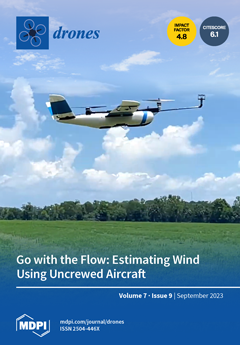Aedes aegypti is widely distributed worldwide and is the main vector mosquito for dengue, one of the most important infectious diseases in middle- and low-income countries. The landscape composition and vegetation cover determine appropriate environments for this mosquito to breed, and it is
[...] Read more.
Aedes aegypti is widely distributed worldwide and is the main vector mosquito for dengue, one of the most important infectious diseases in middle- and low-income countries. The landscape composition and vegetation cover determine appropriate environments for this mosquito to breed, and it is fundamental to define the most affordable methodology to understand these landscape variables in urban environments. The proposed methodology integrated drone technologies and traditional entomological surveillance to strengthen our knowledge about areas suitable for
Ae. aegypti infestation. We included an analysis using the vegetation indexes, NDVI and NDVIRe, and their association with
Ae. aegypti larvae and adults in houses from the El Vergel neighborhood Tapachula, Chiapas, Mexico. We used drone technology to obtain high-resolution photos and performed multispectral orthomosaic constructions for the data of vegetation indexes with a kernel density analysis. A negative binomial regression was performed to determine the association between the numbers of
Ae. aegypti larvae and adults with the kernel density based on NDVI and NDVIRe. Medium and high values of kernel density of NDVIRe (both
p-value < 0.05) and NDVI (both
p-value < 0.05) were associated with a higher amount of mosquito adults per houses. The density of
Ae. aegypti larvae per house did not show an association with medium and high values of NDVIRe (both
p-value > 0.05) and NDVI (both
p-value > 0.05). The vegetation indexes, NDVI and NDVIRe, have potential as precise predictors of
Ae. aegypti adult mosquito circulation in urban environments. Drone technology can be used to map and obtain landscape characteristics associated with mosquito abundance in urban environments.
Full article





